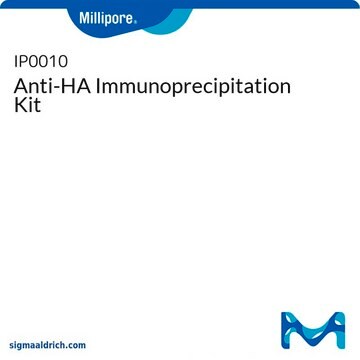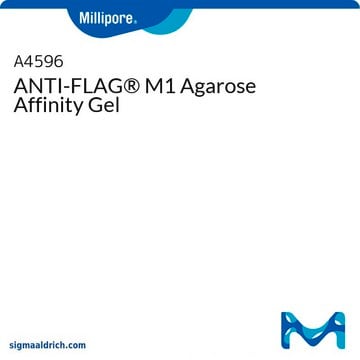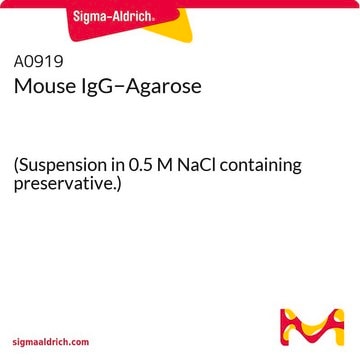A2095
Monoclonal Anti-HA−Agarose antibody produced in mouse
clone HA-7, purified immunoglobulin, PBS suspension
Synonym(s):
Monoclonal Anti-HA, Anti-HA, Anti-Influenza Hemagglutinin
About This Item
Recommended Products
biological source
mouse
conjugate
agarose conjugate
antibody form
purified immunoglobulin
antibody product type
primary antibodies
clone
HA-7, monoclonal
form
PBS suspension
isotype
IgG1
capacity
20-50 nmol/mL elution capacity (HA-tagged fusion protein)
30-50 nmol/mL binding capacity (HA-tagged fusion protein)
shipped in
wet ice
storage temp.
2-8°C
Looking for similar products? Visit Product Comparison Guide
Related Categories
General description
Specificity
Immunogen
Application
Physical form
Preparation Note
Not finding the right product?
Try our Product Selector Tool.
related product
Storage Class Code
10 - Combustible liquids
WGK
WGK 3
Flash Point(F)
Not applicable
Flash Point(C)
Not applicable
Personal Protective Equipment
Certificates of Analysis (COA)
Search for Certificates of Analysis (COA) by entering the products Lot/Batch Number. Lot and Batch Numbers can be found on a product’s label following the words ‘Lot’ or ‘Batch’.
Already Own This Product?
Find documentation for the products that you have recently purchased in the Document Library.
Customers Also Viewed
Our team of scientists has experience in all areas of research including Life Science, Material Science, Chemical Synthesis, Chromatography, Analytical and many others.
Contact Technical Service















